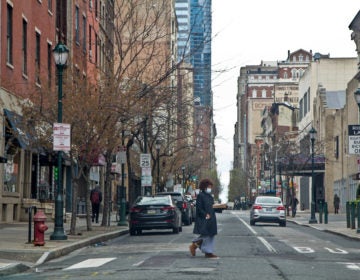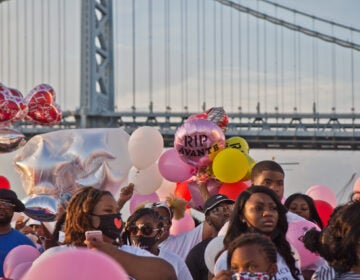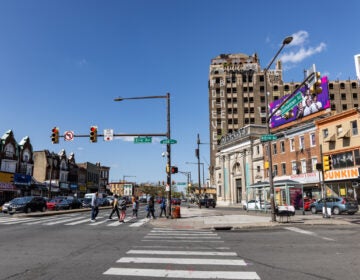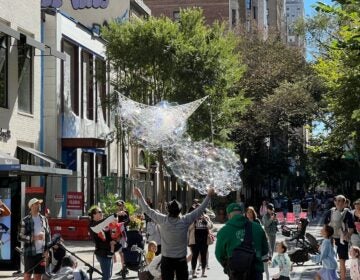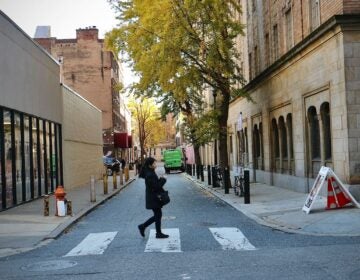Is Philadelphia’s deadly car crash surge another public health crisis?
2020 has been a particularly deadly year on Philly roads. Holidays are a time when crash rates spike. Experts worry this year could be even worse.
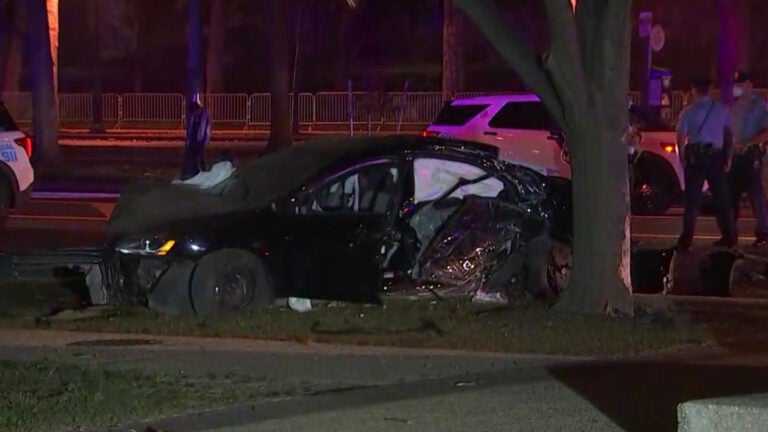
A Sept. 24 car crash on Benjamin Franklin Parkway killed one person. (NBC10)
Philly saw its worst year in recent history for fatal car crashes — and 2020 isn’t even over yet.
The Philadelphia Police Department confirmed 111 fatal automobile crashes between the beginning of January and the end of October, the city’s worst year since 1997, when 137 people were killed. The department’s public database, a tally that includes some fatalities that are still being investigated, recorded 119 deaths, as of press time.
That is a major uptick from 75 people killed by fatal car crashes between January and October 2019, a 54% increase in fatalities. That’s up from a 25% increase reported just a few months ago, a gulf that will continue to widen over the coming month as the city heads into a holiday season historically associated with an uptick in car crashes.
“We have the highest number of traffic fatalities in quite a few years, and it’s happening in a year in which we have reduced driving,” said University of Pennsylvania professor Erick Guerra, who studies crash data. “It’s deeply concerning.”
Unofficial statistics from the Bicycle Coalition of Greater Philadelphia, which has long advocated for traffic safety improvements, indicate the city’s official fatality count understated the true toll — the group’s own tally recorded 125 deaths this year. More recent crashes, like a driver who killed a woman and injured another person after driving the wrong way down a street last week, have yet to be formally recorded in official city statistics.
Of decedents who had been identified by police, about 60% were drivers or passengers, while 40% were pedestrians or cyclists struck and killed by drivers. The latter is more than double the national average, which Guerra attributed to the increased presence of pedestrians in dense cities.
The professor attributed the unusual spike in part to COVID-19, both through increased alcohol consumption and, paradoxically, the temporary decrease in auto usage under coronavirus restrictions. Petroleum use, which generally correlates to reduction in miles driven, fell to its lowest levels in decades during the first wave of the pandemic, resulting in less congested roadways, allowing the remaining drivers to reach higher traffic speeds.
Although the state has discouraged holiday travel for Thanksgiving and issued orders shutting bars early to contain virus spread, Guerra said it was too early to say if the restrictions would translate into decreased auto deaths. The stay-home orders and early last call rule put in effect earlier in the year when the pandemic took off hasn’t curbed crash rates.
Philadelphia transportation officials acknowledged the spike and pointed to the recent release of its 2025 Vision Zero plan, which calls for enhanced traffic enforcement and infrastructure improvements to achieve a goal of zero deaths by 2030.
“Although we know we cannot look at any one year of data in isolation, these tragic deaths make the City’s Vision Zero efforts more important than ever,” said Joy Huerta, a spokesperson for the city’s Office of Transportation, Infrastructure, and Sustainability.
The city is limited in some ways by how aggressively it can pursue direct changes as the Pennsylvania Department of Transportation controls a number of major city streets marked as state routes. The agency said it supported the city’s efforts to combat traffic deaths.
“We don’t have a Vision Zero plan, but do partner with the city on their Vision Zero initiative,” said deputy PennDOT spokesperson Brad Rudolph.
PennDot recently took steps to improve safety conditions on Cobbs Creek Parkway after PlanPhilly reported on the agency’s longtime failures to make traffic safety fixes advocated for by residents of the West Philadelphia neighborhoods along the route.
Randy LoBasso, policy director for the Bicycle Coalition, praised these efforts. But he pointed to limited progress in some of the deadly trouble spots the city long ago identified.
“We’ve known that these really large arterial streets have been an issue since we introduced Vision Zero to the city,” he said.
These also include stretches with largely unrestricted traffic flow like Kelly Drive, or the Roosevelt Boulevard, a Northeast Philadelphia surface highway with numerous pedestrian crossings. A driver was killed on a stretch of the boulevard just a month ago, after flipping his car over an embankment.
Although eclipsed by deaths related to COVID-19 and the city’s rising murder rate, Guerra urged city residents and policymakers to similarly treat traffic deaths as a public health crisis and discourage aggressive driving. He pointed to successful messaging efforts in the past to attach a stigma to tobacco use.
“There was a long time where most people thought it was acceptable to smoke around kids. But that changed,” he said. “I do think car culture can change, too. But we’re not there yet.”

Subscribe to PlanPhilly
WHYY is your source for fact-based, in-depth journalism and information. As a nonprofit organization, we rely on financial support from readers like you. Please give today.



